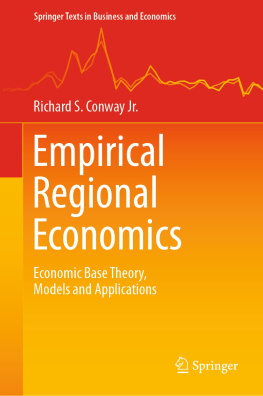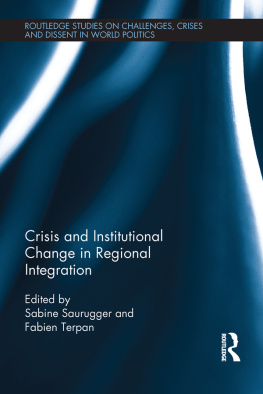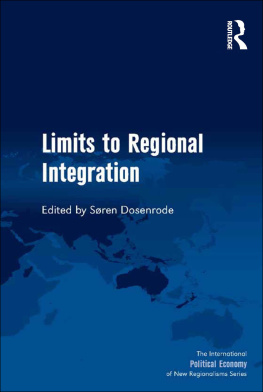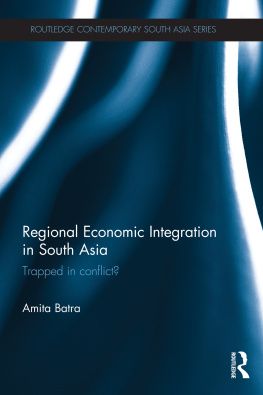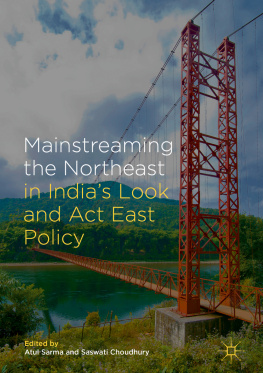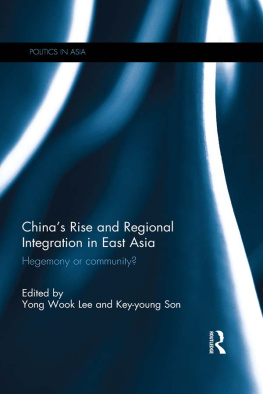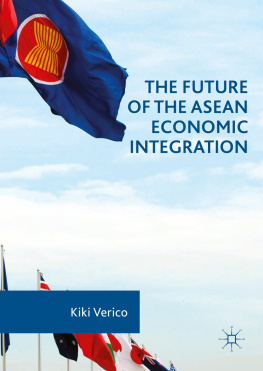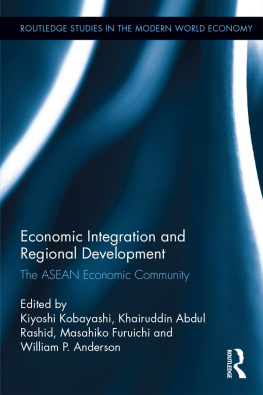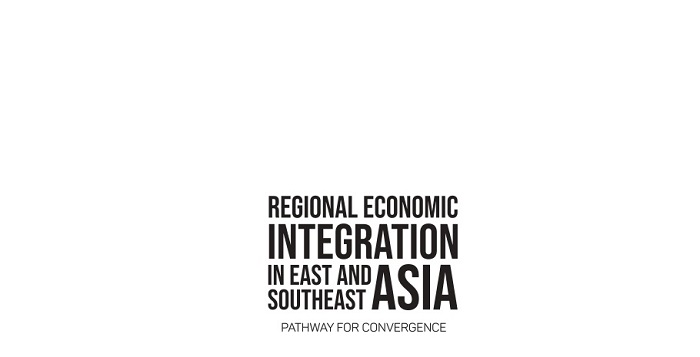
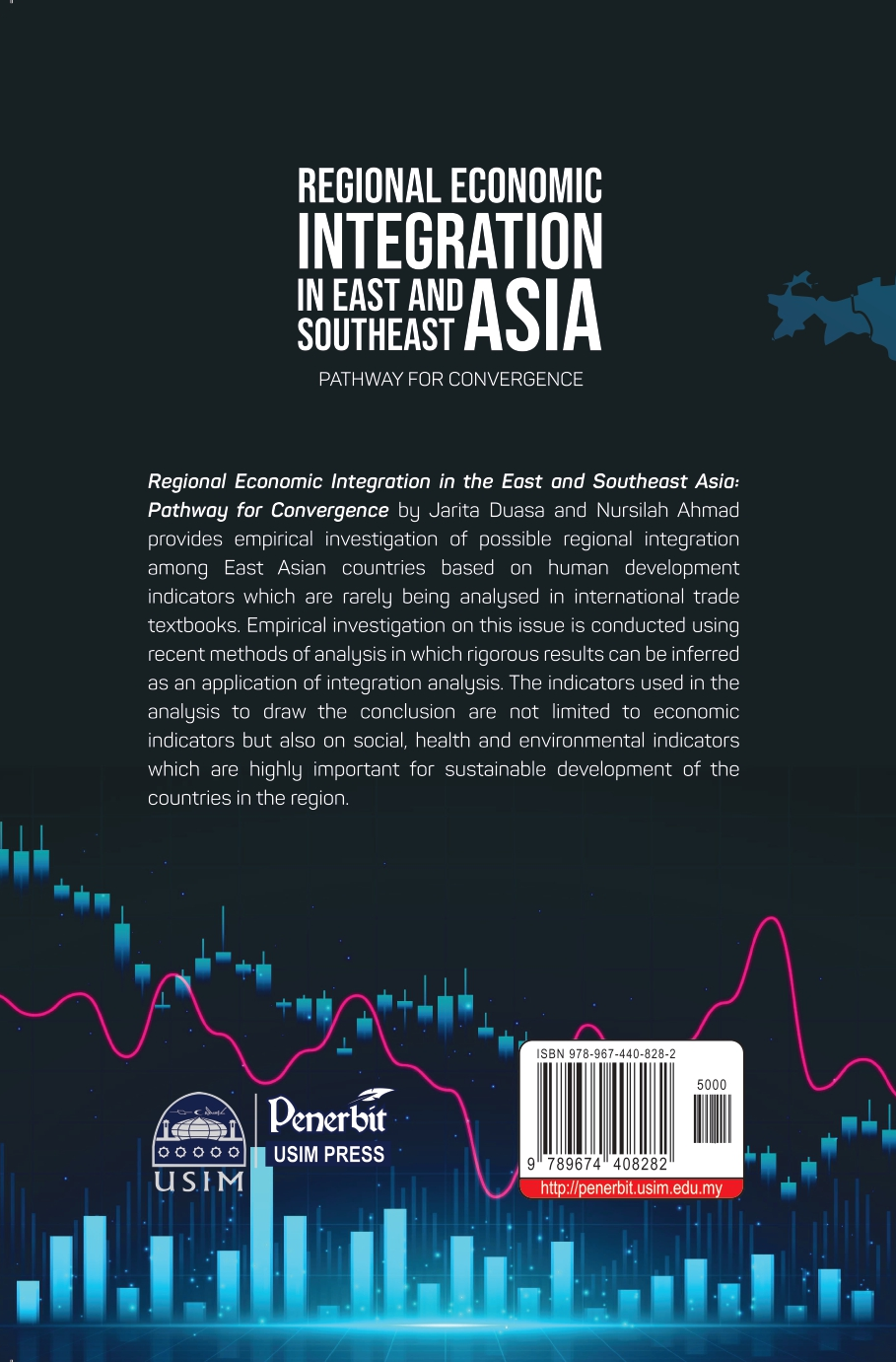

Jarita Duasa
Nursilah Ahmad
USIM Press
Universiti Sains Islam Malaysia
Bandar Baru Nilai
Negeri Sembilan
ePUB 2021
Universiti Sains Islam Malaysia
All rights reserved; no part of this publication may be reproduced, stored in aretrieval system, or transmitted in any form or by any means, electronic, mechanical,photocopying, recording or otherwise without prior written permission from USIMPress.
Published in Malaysia by:
USIM Press
Universiti Sains Islam Malaysia
71800 Bandar Baru Nilai
Negeri Sembilan Darul Khusus
Tel: 06-798 6271/6272 | Fax: 06-798 6083
www.penerbit.usim.edu.my
info.penerbit@usim.edu.my
USIM Press is a member of the
Malaysian Scholarly Publishing Council (MAPIM)
National Library of Malaysia Cataloguing-In-Publication-Data
Jarita Duasa
REGIONAL ECONOMIC INTEGRATION IN EAST AND SOUTHEAST ASIA : PATHWAY FOR CONVERGENCE / Jarita Duasa, Nursilah Ahmad.
ISBN 978-967-440-828-2
eISBN 978-967-440-878-7
1. International economic integration.
2. International economic integration--International unification.
3. Regional economics--International unification.
4. Asia--Economic integration.
5. Southeast Asia--Economic Integration.
6. Government publication--Malaysia.
I. Nursilah Ahmad. II. Title.
337.1
This e-book is best viewed with iBooks. USIM Press shall not be liable for any loss or damage caused by any changes due to usage of any applications.
TABLE OF CONTENTS
Introduction
Understanding Economic Integration
Income Convergence or Divergence
Beyond Economic and Political Reasons
Summary
Introduction
Asias Rise in the 21st Century
Integration in Asean
Regional Economic Integration in East Asia
Summary
Introduction
Economic Growth in Islam
Sustainable Development Concept
The Debate on Sustainability
Conventional Approaches
The Islamic Perspective
Summary
Introduction
Human Development and Growth Indicators
Economic Indicators
Environmental Indicators
Health Indicators
Social Indicators
Summary
Introduction
Model Development
The Linear Model: Augmented Dickey Fuller (ADF) Test
Kapetanois et al. Non-Linear Stationary (KSS) Test
Combo Analysis
Country-Specific Analysis
Summary
Should East Asia Countries Converge with Japan or Singapore?
Excursus: Islamic Values in Integration
DEDICATION
To our family, friends and avid readers of economics The world changes constantly But there are certain economic fundamentals that do not change
LIST OF TABLES
Table 2.1:
| Intra and extra-ASEAN trade, 2015
|
Table 2.2:
| ASEAN trade by selected partner country/region,2015
|
Table 2.3:
| ASEAN member states: Selected keymacroeconomic indicators, 2017
|
Table 2.4:
| ASEAN member states: Selected basicindicators, 2017
|
Table 2.5:
| Accelerating AFTA for the original ASEAN-6countries, 2000 2002
|
Table 4.1:
| Human development component and indicators
|
Table 5.1:
| ADF test of GDP growth
|
| Table 5.2: | ADF test of exchange rates
|
| Table 5.3: | ADF test of exports
|
| Table 5.4: | ADF test of imports
|
| Table 5.5: | ADF test of fixed telephone subscription
|
| Table 5.6: | ADF test of mobile telephone subscription
|
| Table 5.7: | ADF test of death rate
|
| Table 5.8: | ADF test of life expectancy
|
| Table 5.9: | ADF test of CO2emissions
|
| Table 5.10: | ADF test of arable land
|
| Table 5.11: | Results of non-linear (KSS) test for GDPgrowth
|
| Table 5.12: | Results of non-linear (KSS) test for exchangerates
|
| Table 5.13: | Results of non-linear (KSS) test for imports
|
| Table 5.14: | Results of non-linear (KSS) test for exports
|
| Table 5.15: | Results of non-linear (KSS) test for fixedtelephone subscription
|
| Table 5.16: | Results of non-linear (KSS) test for mobiletelephone subscription
|
| Table 5.17: | Results of non-linear (KSS) test for deathrate
|
| Table 5.18: | Results of non-linear (KSS) test for lifeexpectancy
|
| Table 5.19: | Results of non-linear (KSS) test for CO2 emissions
|
| Table 5.20: | Results of non-linear (KSS) test for arableland
|
| Table 5.21: | Summary of empirical results of stationaritytests
|
LIST OF FIGURES
| Figure 2.1: | Intra-regional trade volume of goods andservices in ASEAN-5 as a percentage of nominal GDP,2005-2010 |
| Figure 2.2: | Symmetry of demand and supply shocks inASEAN-5 and Euro zone area |
| Figure 2.3: | Economic integration and asymmetric shocks:European Commission vs. Krugman views |
| Figure 4.1: | GDP growth (%) 79 |
| Figure 4.2: | Exchange rates (Local domestic currency/USD) |
| Figure 4.3: | Imports (Million USD, in natural log) |
| Figure 4.4: | Exports (Million USD, in natural log) |
| Figure 4.5: | CO2 emissions (Metrictons per capita) |
| Figure 4.6: | Arable land (Percentage of land area) |
| Figure 4.7: | Death rate, crude (Per 1000 people) |
| Figure 4.8: | Life expectancy at birth (Total years) |
| Figure 4.9: | Primary education, duration (Years) |
| Figure 4.10: | Mobile cellular telephone subscription(Million, in natural log) |
| Figure 4.11: | Fixed telephone subscription (Absolute value,in natural log) |
PREFACE
This book attempts to analyse the issue of whether or not the EastAsian countries should adopt a more structured or institutionalisedapproach in their efforts toward greater regional economic integration.It is written in response to the continued slowdown in global economicgrowth post 2007/2008 financial crisis. The reasons for a morestructured approach to regional economic integration and cooperationcan be extended beyond the political and economic considerations,that is, through human development indicators which covereconomic, social, health and environmental conditions. The disparity,particularly between the middle-to-low income countries of East Asiaand other countries, echoes the concern expressed in the 1999 UNDPHuman Development Report. Inequality has been rising within andbetween countries. As a result, the income gap has widened. Thebook argues that the gap could be narrowed through convergence inhuman development at the regional level. Hence, the book examinesthe possibility of a more structured or institutionalised regionalcooperation in East Asia based on human development components.
Next page

